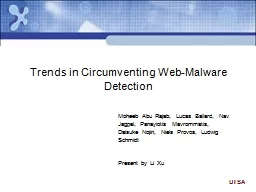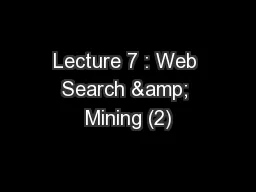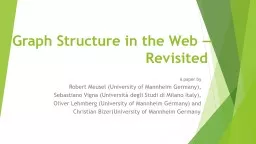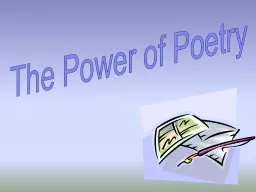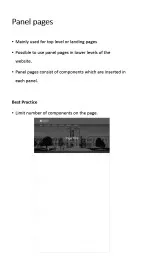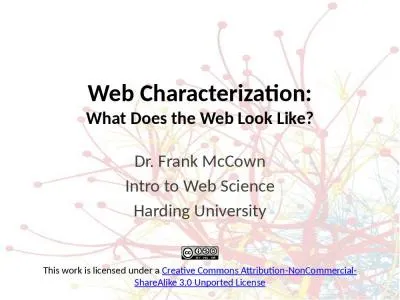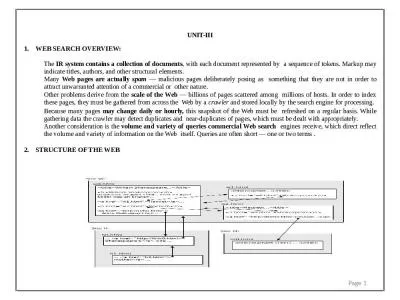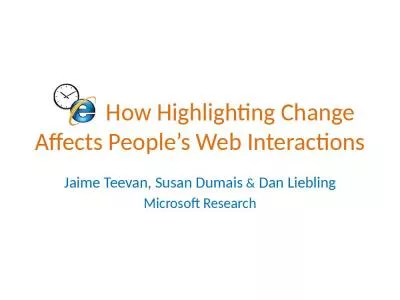PPT-IR for Web Pages
Author : celsa-spraggs | Published Date : 2016-08-03
Im not sure Google is a rational business trying to maximize its own profits Eric Schmidt 922 Search Engine A search engine is essentially a text retrieval system
Presentation Embed Code
Download Presentation
Download Presentation The PPT/PDF document "IR for Web Pages" is the property of its rightful owner. Permission is granted to download and print the materials on this website for personal, non-commercial use only, and to display it on your personal computer provided you do not modify the materials and that you retain all copyright notices contained in the materials. By downloading content from our website, you accept the terms of this agreement.
IR for Web Pages: Transcript
Download Rules Of Document
"IR for Web Pages"The content belongs to its owner. You may download and print it for personal use, without modification, and keep all copyright notices. By downloading, you agree to these terms.
Related Documents


